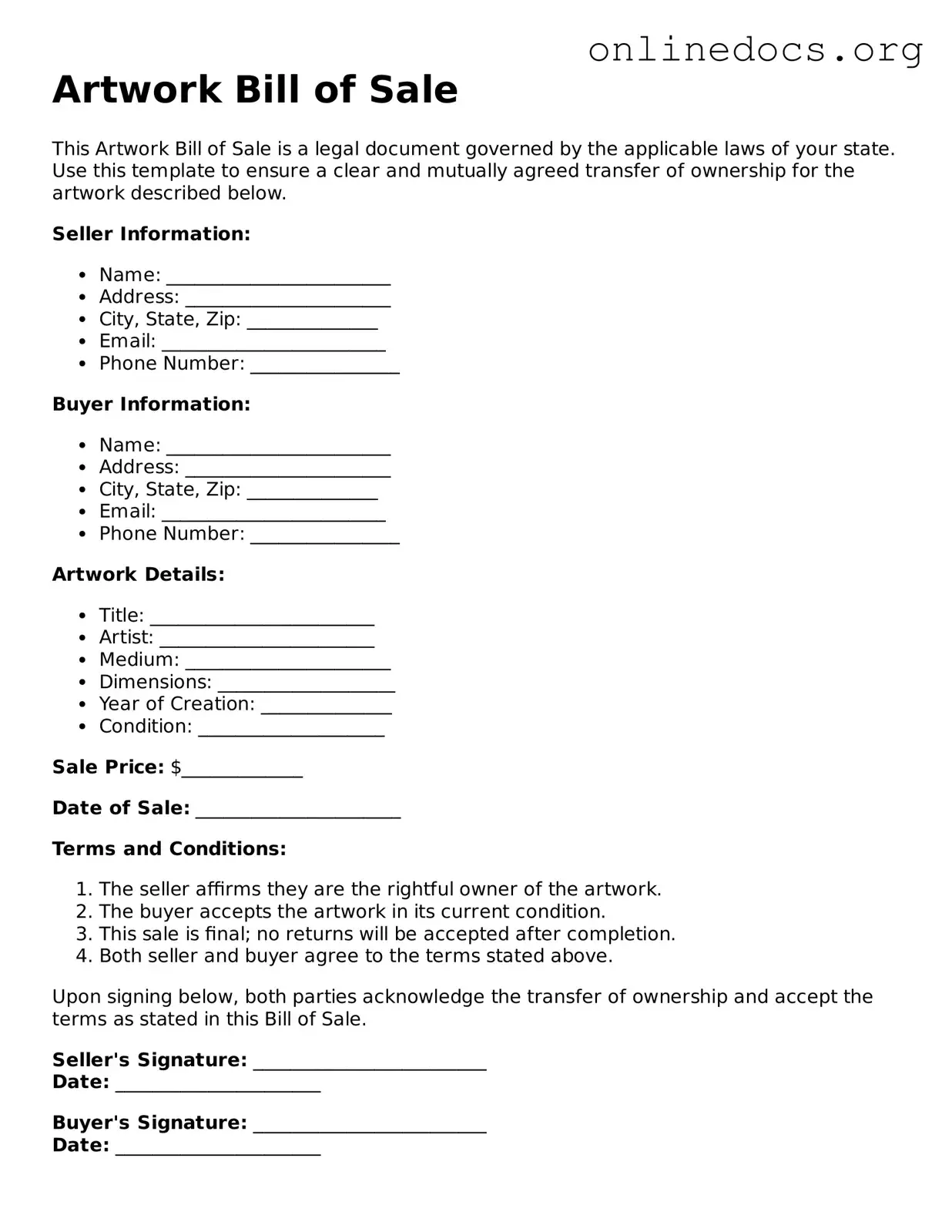When filling out an Artwork Bill of Sale form, individuals often overlook critical details that can lead to confusion or disputes later on. One common mistake is failing to provide complete information about the artwork being sold. This includes not only the title and artist but also the medium, dimensions, and any relevant provenance. Without these details, the document may lack the clarity needed to establish ownership and authenticity.
Another frequent error is neglecting to include the sale price. While it may seem obvious, omitting this information can create complications if there are any disputes over the transaction. Buyers and sellers should ensure that the agreed-upon price is clearly stated to avoid any misunderstandings in the future.
Many people also forget to include the date of the sale. This detail is crucial for record-keeping and can be important if there are questions about the timing of the transaction. Without a date, it may be difficult to establish when the ownership of the artwork changed hands.
In addition, individuals sometimes fail to sign the form. A signature is essential as it indicates agreement to the terms outlined in the bill of sale. Both the seller and buyer should sign the document to validate the transaction. Without signatures, the document may not hold up if challenged.
Another mistake involves not providing contact information for both parties. Including addresses and phone numbers can be beneficial for future communication. This information can help resolve any issues that may arise after the sale, such as questions about the artwork or potential disputes.
Some individuals also overlook the importance of including any warranties or guarantees related to the artwork. If the seller is offering any assurances regarding the authenticity or condition of the piece, these should be clearly stated in the bill of sale. This protects both parties and establishes expectations for the transaction.
People often make the mistake of using vague language when describing the artwork. Instead of general terms, precise descriptions should be used. This helps to avoid ambiguity and ensures that both parties have a clear understanding of what is being sold.
Another common oversight is not keeping a copy of the completed bill of sale. After the transaction is finalized, both the buyer and seller should retain a copy for their records. This document serves as proof of the sale and can be important for future reference.
Lastly, individuals may not realize the importance of checking for any local or state regulations regarding the sale of artwork. Some jurisdictions may have specific requirements that need to be addressed in the bill of sale. Familiarizing oneself with these regulations can prevent potential legal issues down the line.
